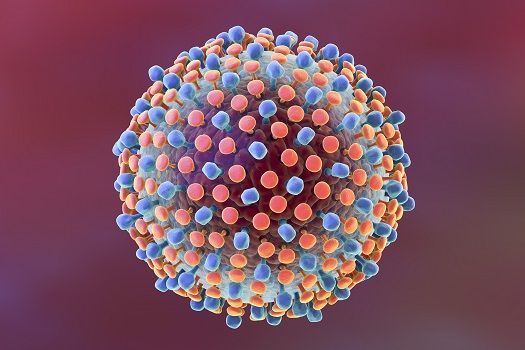Article
Glecaprevir/Pibrentasvir Proves To Be Efficacious Real-World HCV Salvage Therapy
Author(s):
Regardless of the number of previous treatment failures or emergence of the single or double RAVs after the first treatment failure all patients achieved SVR at 12 weeks on the regimen.

Glecanprevir plus pibrentasvir (Mavyret) was successfully used as a salvage therapy for patients with hepatitis C virus (HCV) infection in a real-world setting, regardless of the number of prior failures with NS5A regimens or emergence of NS5A resistance-associated variants (RAVs), according to a new study.
Investigators, led by Norio Akuta, MD, of the Tokyo-based Toranomon Hospital’s Department of Hepatology, observed in their results that not much real-world data is available on the efficacy of retreatment with direct-acting antiviral (DAA) regimens—“probably due to the long-term posttreatment persistence of RAVs of the NS5A region," they wrote.
In an earlier investigation with ledipasvir/sofosbuvir (Harvoni) as a salvage regimen after failures on daclatisvir (Daklinza) and investigative therapy asunaprevir, Akuta and colleagues achieved sustained virologic response (SVR) in only 70% of patients. This was not, they reported, "adequate treatment efficacy as a salvage therapy for failures of prior NS5A regimens."
The investigators turned to glecanprevir/pibrentasvir (G/P) for their new study of salvage therapy, identifying 239 patients admitted between November 2017 and May 2018 for treatment of chronic HCV infection of genotype 1b, 2a, or 2b without decompensated cirrhosis or hepatocellular carcinoma.
Of those screened, 83 were treated with G/P for failures of prior DAA regimens, and 20 were able to be included in the intention-to-treat analysis of the 12 weeks of therapy.
Clinical examination and blood tests were performed at least once each month before, during and after the 12 weeks of treatment. The classifications of efficacy outcomes were "nonresponse" if HCV-RNA was detected during or at the end of treatment; "viral breakthrough" if there was re-elevation of viral load before the end of treatment after negative measure; or "relapse" if viral load increased after end of treatment despite negative HCV-RNA.
In the study cohort, 5 of 7 patients with genotype 1b had failed prior treatments more than once. All were determined to have NS5A RAVs at the position on aa 93, and 4 had a double mutation, with the additional RAV at aa 31. These RAVs had emerged after stopping the first DAA treatment, and had maintained to the commencement of the G/P trial.
Regardless of the number of previous treatment failures or emergence of the single or double RAVs after the first treatment failure, however, all patients achieved SVR at 12 weeks on the G/P regimen.
"We have demonstrated in the present retrospective study that G/P can be considered a potential salvage therapy for HCV failures to prior DAA regimens in real-world setting, regardless of the number of times of prior treatment, prior treatment response, and fibrosis stage," investigators concluded.
Akuta and colleagues acknowledged that no patient had presented with RAV at aa 32 for the G/P regimen to overcome. They characterized this novel substitution as "an important problem for the future to overcome."
They also called for larger, and prospective studies to confirm the efficacy of the treatment for this population.
"Further studies are needed to fully investigate the difficult-to-treat mechanism, including the complex interaction among various virus- and host-related factors to speed the development of efficacious therapies," investigators wrote.
The study, "Favorable efficacy of glecaprevir plus pibrentasvir as salvage therapy for HCV failures to prior direct‐acting antivirals regimens," was published online in the Journal of Medical Virology.





